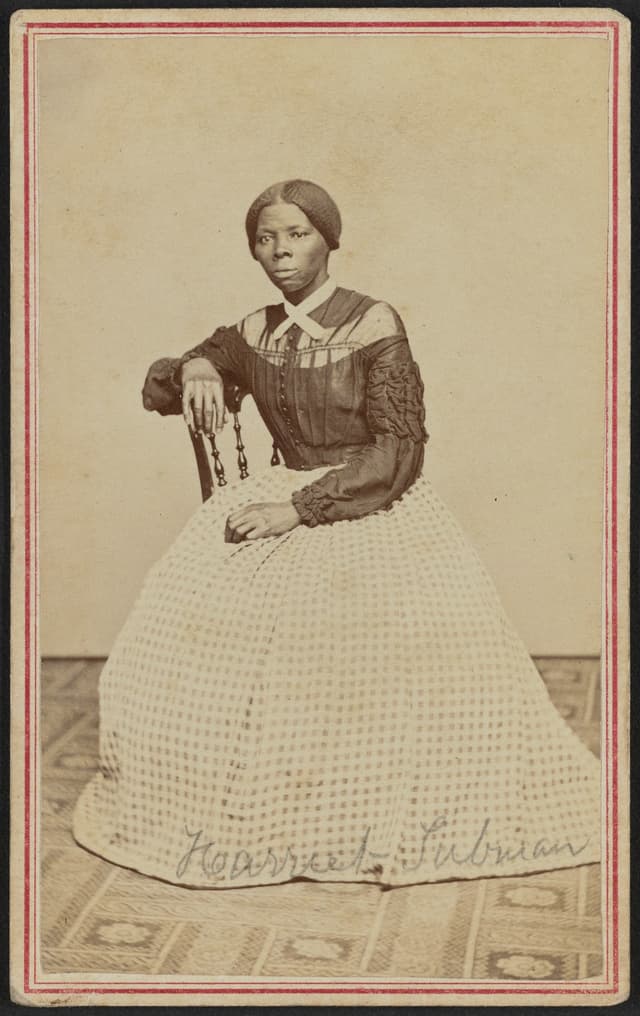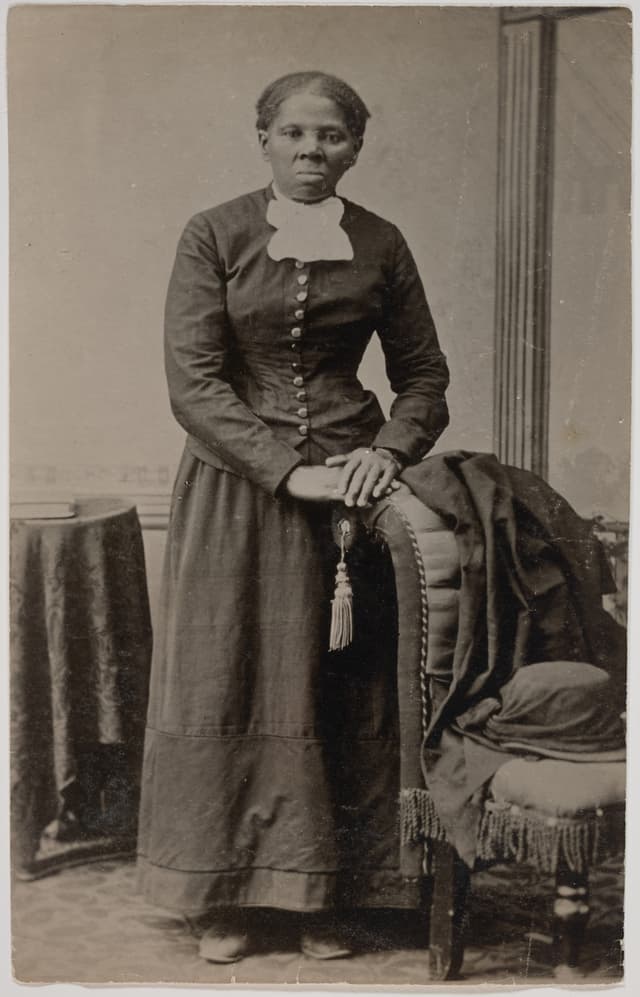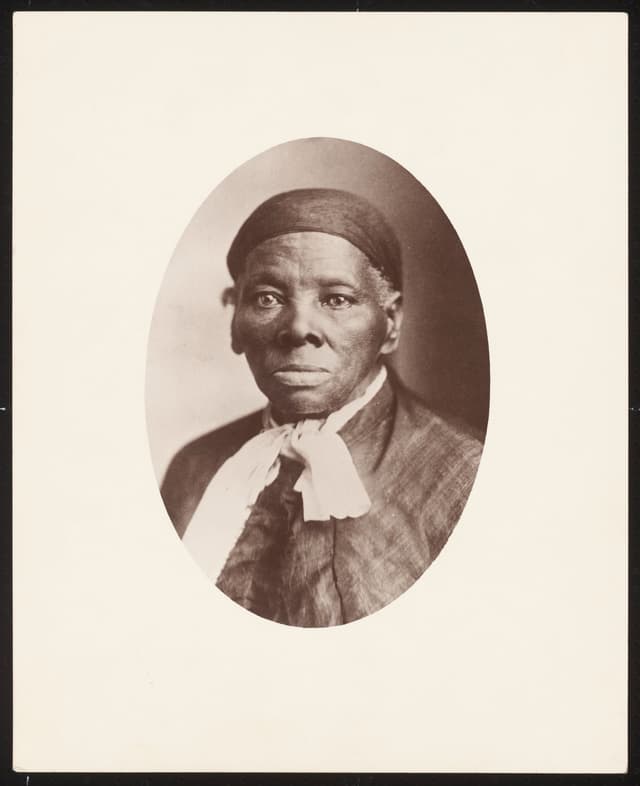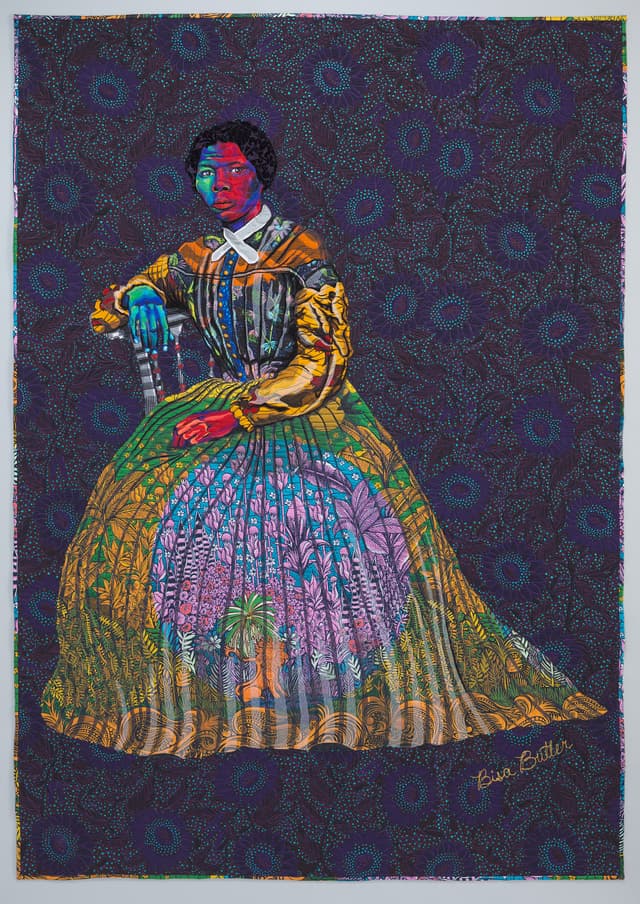Legacies of Resistance in African American Art and Photography
Maya Hall
7 min read
Listen to this study note
Study Guide Overview
This study guide covers the use of photography by 19th-century Black leaders (like Frederick Douglass and Sojourner Truth) to challenge stereotypes and promote their image. It also examines how contemporary artists (such as Kehinde Wiley, Amy Sherald, and Bisa Butler) continue this legacy through their artwork. The guide includes visual analysis of Harriet Tubman's portraits and Bisa Butler's work, and provides practice questions covering these key concepts.
#AP African American Studies: Visualizing Black Leadership - Your Night Before Guide 🚀
Hey! Let's get you prepped and confident for tomorrow. This guide is designed to be your quick, high-impact review. We're focusing on the most important stuff, making connections, and keeping it engaging. Let's do this!
#1. Photography as a Tool for Change 📸
African American leaders in the 19th century strategically used photography to challenge negative stereotypes and assert their dignity. This was a revolutionary act, using a new technology to reshape public perception. Think of it as early 'image activism.'
#Photography as a Counter-Stereotype Tool
- Challenging Stereotypes: 19th-century Black leaders used photography to combat racist caricatures.
- Dignified Representation: They posed for formal portraits to show themselves as respectable citizens.
- Controlling the Narrative: Photography gave them agency over their own image and story.
- Examples: Frederick Douglass and Sojourner Truth were pioneers in this movement.
Think of it like this: Photography = Power to Portray themselves as they truly were, not as others depicted them.
Remember to connect the use of photography to broader themes of agency and resistance. This link is key for FRQs.
#Sojourner Truth's Carte-de-Visites
- Activism through Images: Truth sold her photos to fund the abolitionist movement.
- Carte-de-Visites: Small, affordable photos that were widely circulated.
- Powerful Portrayal: Her photos showed her as strong, determined, and intelligent.
- "I Sell the Shadow to Support the Substance": This quote highlights her strategic use of photography for activism.
Carte-de-visites were like the social media of the 19th century – small, shareable, and impactful.
#Frederick Douglass's Photographic Legacy
- Most Photographed Man: Douglass understood the power of visual representation.
- Curated Image: He carefully crafted his image to convey intellect and sophistication.
- Visual Proof: His photos challenged racist stereotypes and inspired others.
- Impact: He demonstrated the potential of Black individuals when given equal opportunity.
Douglass was all about Dignity and Determination, and his photos were a Direct challenge to racism.
#2. Contemporary Art and Black Leaders 🎨
#Contemporary Art of Black Leaders
- Continuing the Tradition: Modern artists honor Black leaders through visual art.
- Black Aesthetic Traditions: They draw from African and African American styles.
- Historical and Cultural References: Artworks often include symbols and themes from Black history.
- Preserving Legacies: Contemporary art ensures the stories of Black leaders continue to inspire.
Understanding how contemporary artists engage with historical figures is crucial. This often appears in FRQs, so be ready to analyze the connections between past and present.
- Examples:
- Kehinde Wiley's Barack Obama Portrait: Combines classical portraiture with contemporary style to elevate Obama's image.
- Amy Sherald's Michelle Obama Portrait: Uses grayscale and geometric shapes to capture her strength and modernity.
- Bisa Butler's Textile Art: Transforms archival photos into vibrant, life-sized portraits, reclaiming Black history.
Don't just describe the art; analyze how it reflects the themes of identity, resistance, and legacy.
#3. Required Sources: Visual Analysis 🖼️
#Harriet Tubman's Portraits

- Carte-de-Visite Portrait (1868-1869):
- Shows Tubman as a strong and determined leader.
- The format made her image widely accessible, spreading awareness of her heroic deeds.

- Matte Collodion Print (1871-1876):
- Provides a rare glimpse into her appearance during a pivotal time in history.
- Testament to her enduring legacy as an abolitionist and Civil War spy.

- Albumen Print (Circa 1908):
- Preserves her likeness in her later years.
- Offers a tangible connection to her remarkable life and legacy.
When analyzing images, consider the context, composition, and purpose. How does the image convey the subject's identity and message?
#Bisa Butler's "I Go to Prepare a Place for You" (2021)

- Textile Artwork:
- Reclaims Black history and identity through quilting.
- Transforms archival photos into vibrant, life-sized portraits.
- Speaks to themes of ancestry, migration, and the African American experience.
#4. Final Exam Focus 🎯
- High-Priority Topics:
- The role of photography in challenging stereotypes.
- The impact of Frederick Douglass and Sojourner Truth.
- Contemporary art and its connection to historical figures.
- Analyzing visual sources (photos, artworks).
- Common Question Types:
- Multiple-choice questions on historical figures and their strategies.
- Short answer questions on the use of visual media.
- Free-response questions requiring analysis of images and their historical context.
- Last-Minute Tips:
- Time Management: Quickly scan questions and prioritize those you know best.
- Common Pitfalls: Avoid simply describing; analyze and connect to broader themes.
- Strategies: Use evidence from the sources to support your claims.
#5. Practice Questions
Practice Question
#Multiple Choice Questions
-
Which of the following best describes the primary purpose of carte-de-visite photographs sold by Sojourner Truth? (A) To document her personal life (B) To promote her career as a photographer (C) To raise funds for the abolitionist movement (D) To showcase her fashion sense
-
Frederick Douglass is known as the most photographed man of the 19th century because: (A) He was a professional photographer. (B) He understood the power of visual representation to promote dignity and equality. (C) He was paid by newspapers to pose for photographs. (D) He was the only African American who could afford to have his picture taken.
-
Contemporary artists like Kehinde Wiley and Amy Sherald often draw inspiration from: (A) Abstract expressionism. (B) Classical European portraiture and Black aesthetic traditions. (C) Surrealism and fantasy art. (D) Traditional landscape painting.
#Free Response Question
Prompt: Analyze how the use of photography by 19th-century African American leaders like Frederick Douglass and Sojourner Truth challenged prevailing stereotypes and contributed to the struggle for civil rights. In your response, consider the specific strategies they employed, the impact of their actions, and how contemporary artists continue to engage with these themes.
Scoring Breakdown:
- Thesis (1 point): A clear, defensible thesis that addresses the prompt's main themes.
- Evidence and Analysis (4 points):
- 1 point: Discussion of how Douglass and Truth used photography to challenge stereotypes.
- 1 point: Explanation of the specific strategies they employed (e.g., formal portraits, selling carte-de-visites).
- 1 point: Analysis of the impact of their actions on the struggle for civil rights.
- 1 point: Connection to contemporary artists who continue to engage with these themes.
- Reasoning and Organization (2 points):
- 1 point: Logical organization of ideas with clear transitions.
- 1 point: Effective use of evidence to support claims.
#Short Answer Question
- Briefly explain the significance of Harriet Tubman's portraits in African American history. How do these images contribute to our understanding of her legacy?
You've got this! Go in there and show them what you know. 💪
Continue your learning journey

How are we doing?
Give us your feedback and let us know how we can improve





